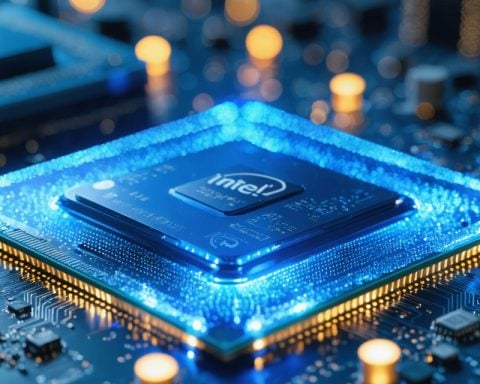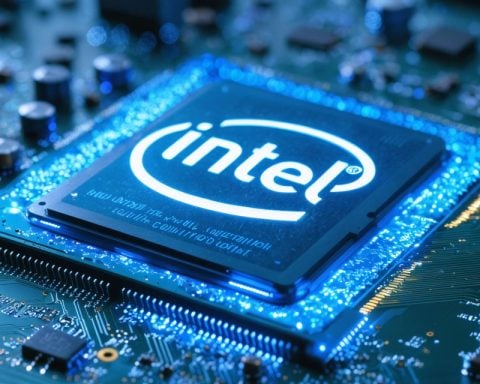Neuralink, the groundbreaking brain-computer interface company led by Elon Musk, has made significant strides in the development of its implant technology. In a recent announcement, it was revealed that the second recipient of the Neuralink implant has successfully used the chip to design 3D objects and even play the popular video game Counter-Strike 2.
Unlike the initial recipient, Noland Arbaugh, who experienced some issues with the implant, the new patient, Alex, has encountered no setbacks. Alex, who previously relied on a mouth-operated joystick for gameplay, found joy in playing first-person shooter games that require managing multiple inputs.
The Neuralink implant has revolutionized Alex’s gaming experience by allowing him to control the game using his thoughts. With the ability to seamlessly aim and move, Alex expressed his excitement, saying, “Just running around is so enjoyable because I can look side to side, and not need to move a joystick left and right… I can [think about where to] look and it goes where I want it to. It’s insane.”
While Neuralink’s current capabilities enable users to control computer cursors, the company has ambitious plans to expand its brain-computer interface, known as Link. Future updates aim to allow users to simultaneously control multiple devices and increase typing speeds through thought alone.
Elon Musk, the visionary behind Neuralink, envisions a future where Neuralink implants become commonplace. He predicts that as progress continues, hundreds of people could have Neuralinks within a few years, tens of thousands within five years, and potentially millions within a decade.
The advancements made by Neuralink hold tremendous potential not only for the gaming industry but also for individuals with disabilities who could benefit from enhanced control and functionality. As the technology continues to evolve, we can expect even greater possibilities for human-computer interaction and integration in the near future.
Additional Facts:
– Neuralink’s implant technology is based on tiny, flexible “threads” that are implanted into the brain to detect and stimulate neural activity.
– The implant communicates wirelessly with external devices, allowing for real-time feedback and control.
– The Neuralink implant has the potential to revolutionize not just gaming, but also various fields such as healthcare, communication, and virtual reality.
– Neuralink is currently focused on medical applications of its technology, aiming to help people with neurological conditions such as paralysis or spinal cord injuries regain function and independence.
– The company has conducted successful tests on primates, demonstrating the ability to control a computer cursor using only neural activity.
Key Questions:
1. How does the Neuralink implant work?
2. What other applications does Neuralink have besides gaming?
3. What are the potential challenges and risks associated with brain-computer interfaces?
4. How affordable and accessible will Neuralink implants be for the general public?
5. What ethical considerations should be taken into account regarding invasive brain technologies?
Key Challenges/Controversies:
1. Safety and long-term effects: The potential risks of brain implants, such as infections, brain tissue damage, or unintended side effects, need to be thoroughly researched and addressed.
2. Privacy and data security: As brain-computer interfaces involve the collection and analysis of sensitive neural data, protecting privacy and ensuring the security of this information is crucial.
3. Ethical implications: The technology raises ethical questions about consent, autonomy, and potential misuse, highlighting the need for careful regulation and guidelines.
4. Accessibility and equity: Ensuring that Neuralink’s technology is accessible and affordable for people from diverse socioeconomic backgrounds is essential to avoid exacerbating existing inequalities.
Advantages of Neuralink:
1. Enhanced functionality and control: Neuralink implants have the potential to revolutionize human-computer interaction, allowing for seamless control of devices and enhanced abilities beyond traditional input methods.
2. Improved quality of life: The technology can greatly benefit individuals with disabilities, providing them with increased independence and opportunities for participation in various activities.
3. Potential medical applications: Neuralink’s technology holds promise for treating neurological conditions, potentially restoring sensory, motor, and cognitive functions.
Disadvantages of Neuralink:
1. Invasive nature: The implantation procedure itself carries risks, including potential damage to brain tissue and the need for invasive surgery.
2. Ethical concerns: The development and use of brain-computer interfaces raise important ethical considerations, including issues of consent, privacy, and potential misuse of the technology.
3. Accessibility and affordability: The cost and availability of Neuralink implants could be a limiting factor, potentially creating disparities in access to advanced neurotechnologies.
Suggested Related Links:
– Neuralink: Official website of Neuralink for more information about their technology and progress.
– ScienceDaily – Brain-Computer Interfaces: Provides news and articles about the latest advancements in brain-computer interface technology.
– Nature – Neuroscience: A journal that covers various topics related to neuroscience, including brain-computer interfaces and neurotechnology.



















